The Italian art historian Federico Zeri has conserved a painting in his archives which we believe is the pendant of our work, or part of the same series. It has almost exactly the same dimensions (103*81cms), depicts Christ and the samaritan woman at the well surrounded by a flower garland and the direction of the composition beautifully mirrors ours. It is registered in the database of the Fondazione Federico Zeri as by Pier Francesco Cittadini under the number 85604.
Pier Francesco Cittadini was a prominent Italian Baroque painter who was born in 1616 in Bologna, Cittadini's artistic journey led him to Venice and later to Rome, where he honed his skills and developed his unique style. Cittadini's works were characterized by their vibrant colors, dramatic lighting, and dynamic compositions. He often depicted religious and mythological subjects with an emotional intensity that captivated viewers. His paintings showcased a mastery of chiaroscuro, the use of strong contrasts between light and dark, to create depth and drama in his scenes. During his time in Venice, Cittadini was influenced by the rich artistic tradition of the city, particularly the works of Venetian masters such as Titian and Tintoretto. This influence is evident in his use of color and composition, which exuded a sense of grandeur and theatricality. Cittadini's reputation as a painter flourished, and his works gained recognition both in Italy and beyond. His commissions included religious altarpieces, mythological scenes, and portraits, all executed with skill and creativity. Despite facing challenges such as competition from other artists and the changing tastes of patrons, Cittadini remained a respected figure in the art world. Today, Cittadini's paintings are housed in museums and private collections around the world, serving as a testament to his enduring talent and contribution to Baroque art. His legacy continues to inspire artists and art enthusiasts, reminding us of the power of creativity to transcend time and place.
In the Christian tradition, the story of Jesus meeting Mary Magdalene in the garden after his resurrection is found in the Gospel of John, specifically in John 20:11-18. In this passage, Mary Magdalene goes to Jesus' tomb early in the morning and finds it empty. Distraught and weeping, she encounters someone she initially mistakes for the gardener. When she realizes it is Jesus, she reaches out to him, but he tells her not to cling to him as he has not yet ascended to the Father. He instructs her to go and tell the disciples about his resurrection, making her the first person to witness and announce the risen Christ. This encounter is significant in Christian theology as it marks the beginning of the disciples' realization that Jesus had indeed risen from the dead, fulfilling his promise of resurrection. It also highlights the role of Mary Magdalene as a faithful disciple and witness to this pivotal event. The story symbolizes hope, renewal, and the triumph of life over death. For believers, it's a reminder that even in the darkest moments of despair, there is the possibility of new beginnings and divine intervention. Mary Magdalene's encounter with the risen Christ illustrates the transformative power of faith and the personal connection individuals can have with the divine. It encourages people to seek out and recognize the presence of God in their own lives, even in unexpected places and amidst profound challenges.
A further interesting detail which we would like to highlight is the depiction of Anemone Coronaria Pseudoplena, also known as Anemone Coccinea Coronaria, in the garland. This is a rare and now extinct flower which was mainly cultured in the 17th century, we have circled it in yellow on the last photo of this listing.
Dimensions: The oil on canvas measures ca. 81 by 102.7 cms and with its frame it measures ca. 111 by 132 cms. The frame is a wonderful old Louis XIV-frame with delicately sculpted floral decorations which form a thoughtful echo of the flowers in the garland.
Provenance: Private collection France
Some notable institutions where his works are housed include: 1. The Hermitage Museum in St. Petersburg, Russia 2. The Pinacoteca di Brera in Milan, Italy 3. The Louvre Museum in Paris, France 4. The National Gallery of Canada






























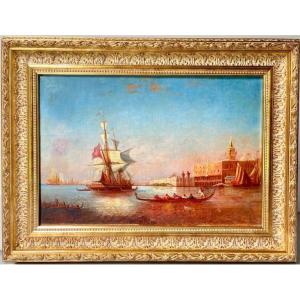
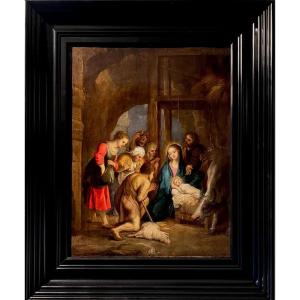



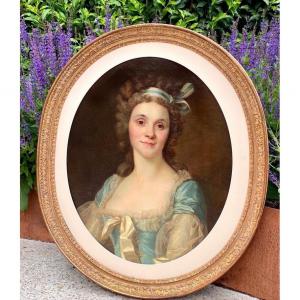

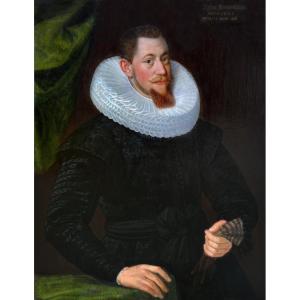
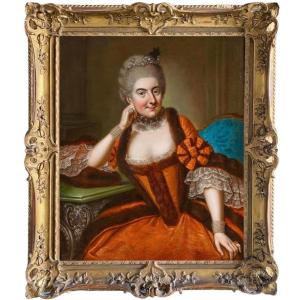


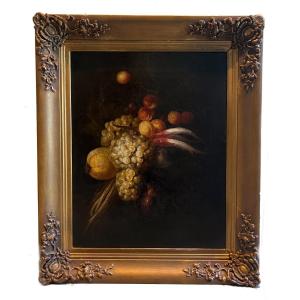
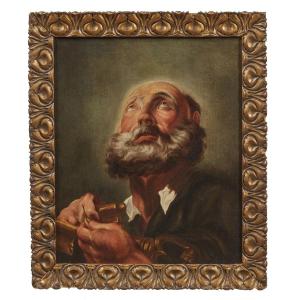
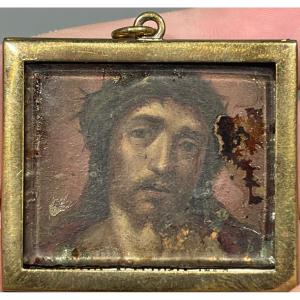






 Le Magazine de PROANTIC
Le Magazine de PROANTIC TRÉSORS Magazine
TRÉSORS Magazine Rivista Artiquariato
Rivista Artiquariato